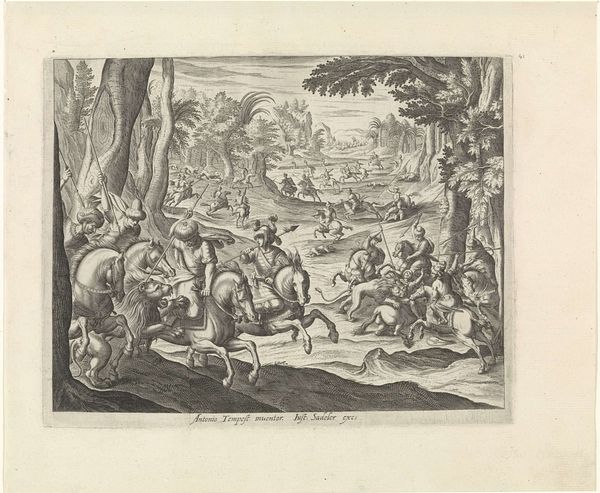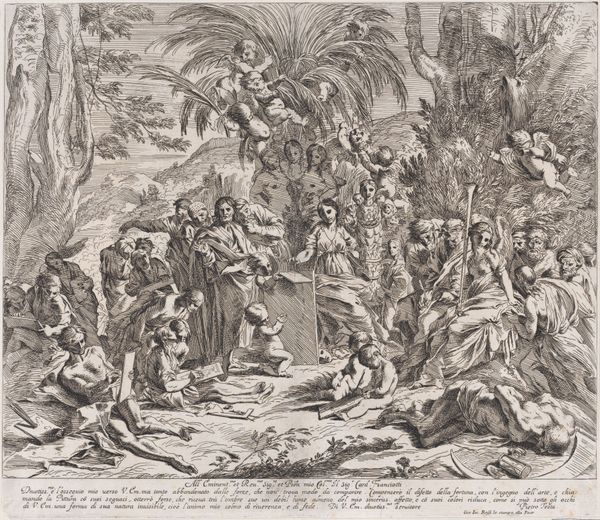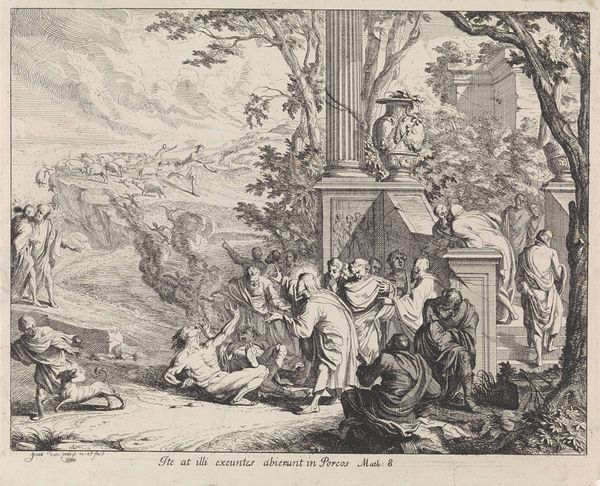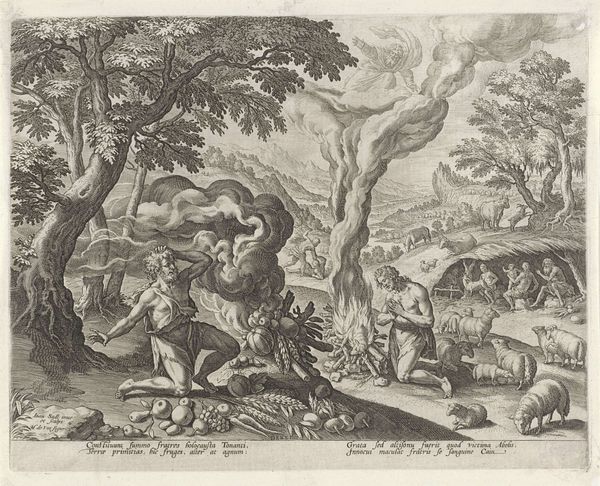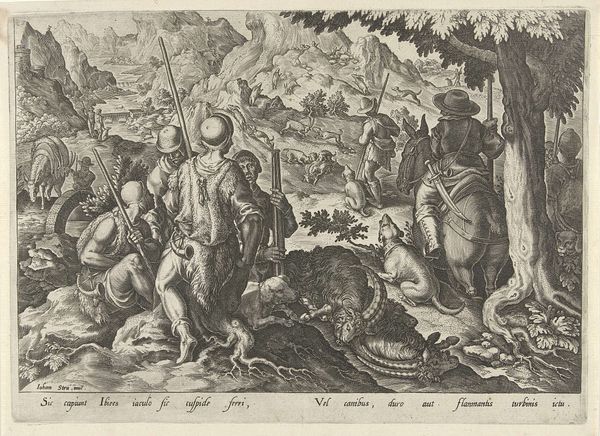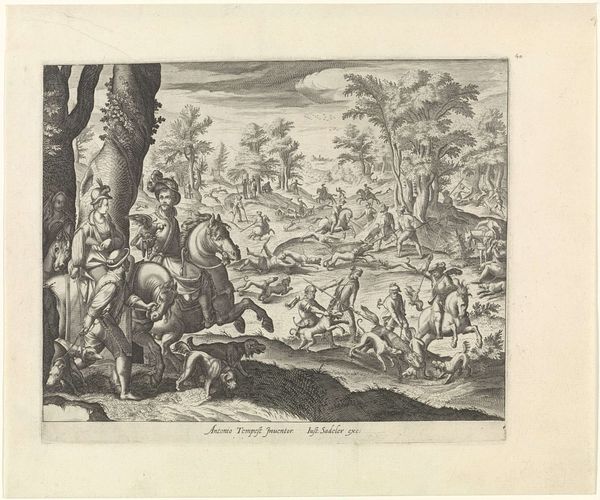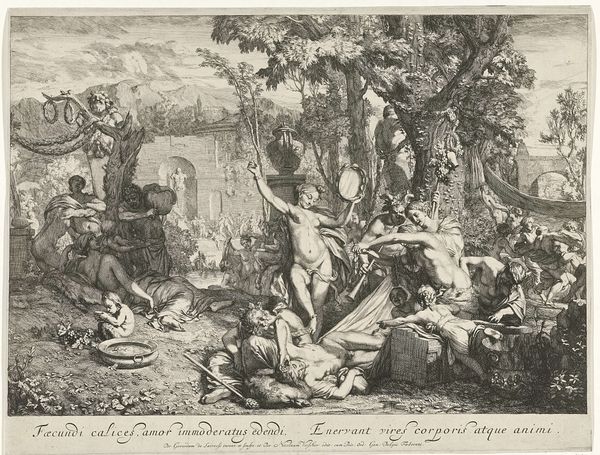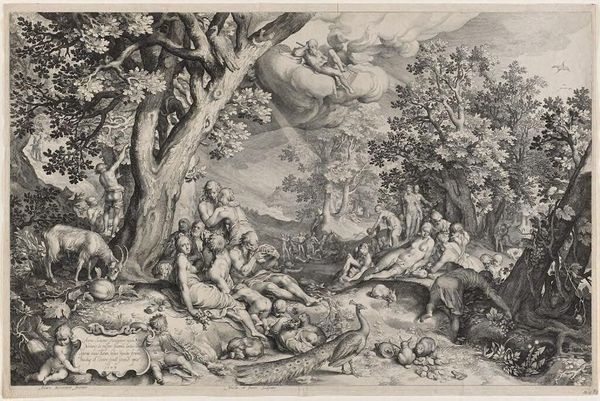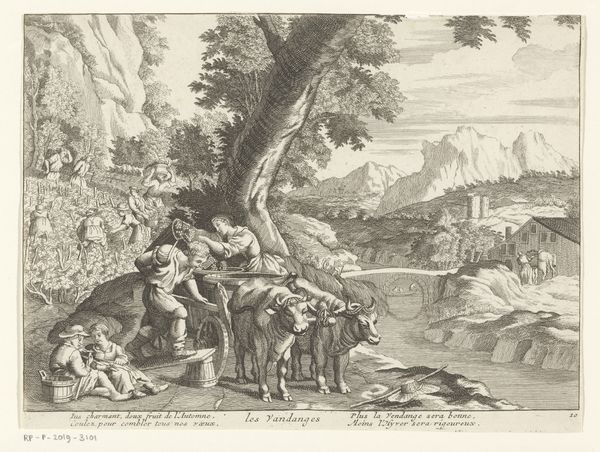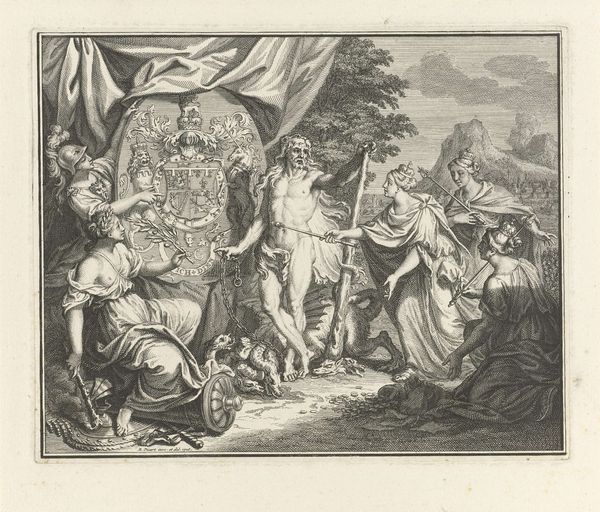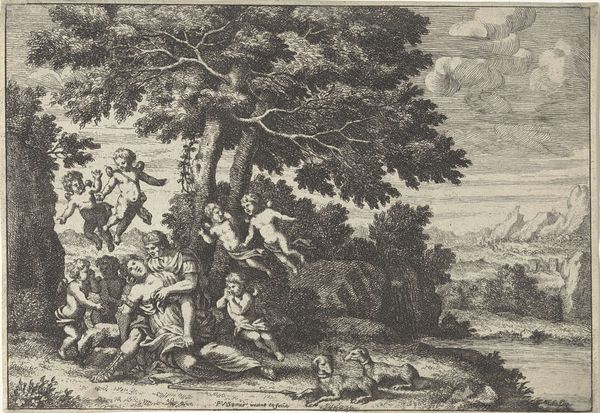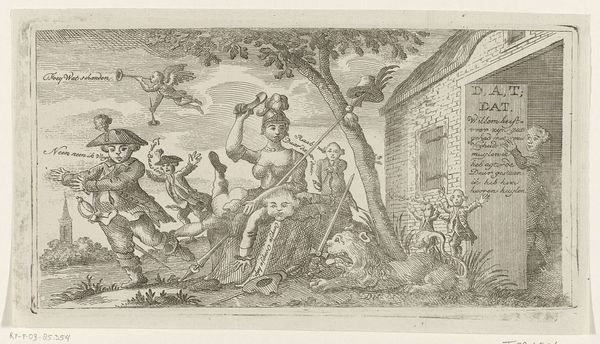
engraving
#
narrative-art
#
baroque
#
figuration
#
history-painting
#
engraving
Dimensions: height 416 mm, width 694 mm
Copyright: Rijks Museum: Open Domain
Pietro Aquila made this print, ‘Moses Strikes Water from the Rock,’ sometime around 1690, using etching and engraving. These are both intaglio processes, meaning that the image is incised into a metal plate, which then holds the ink. Look closely, and you’ll notice the incredible fineness of the lines. The matrix would have been prepared with great care. With etching, a waxy ground is applied, through which the artist draws with a needle. Acid bites into the exposed metal, creating recessed lines. Engraving, by contrast, requires directly gouging the metal with a tool called a burin. Aquila has created a sense of depth, as he renders the biblical scene with countless tiny marks. In the 17th century, printmaking was not just a means of artistic expression, but also a reproductive medium. Printmakers were essentially industrial workers, who would have understood their efforts as part of a larger commercial picture. This beautiful print, therefore, is both art and industry, handcraft and proto-mass production. By appreciating its making, we recognize its full cultural significance.
Comments
No comments
Be the first to comment and join the conversation on the ultimate creative platform.
